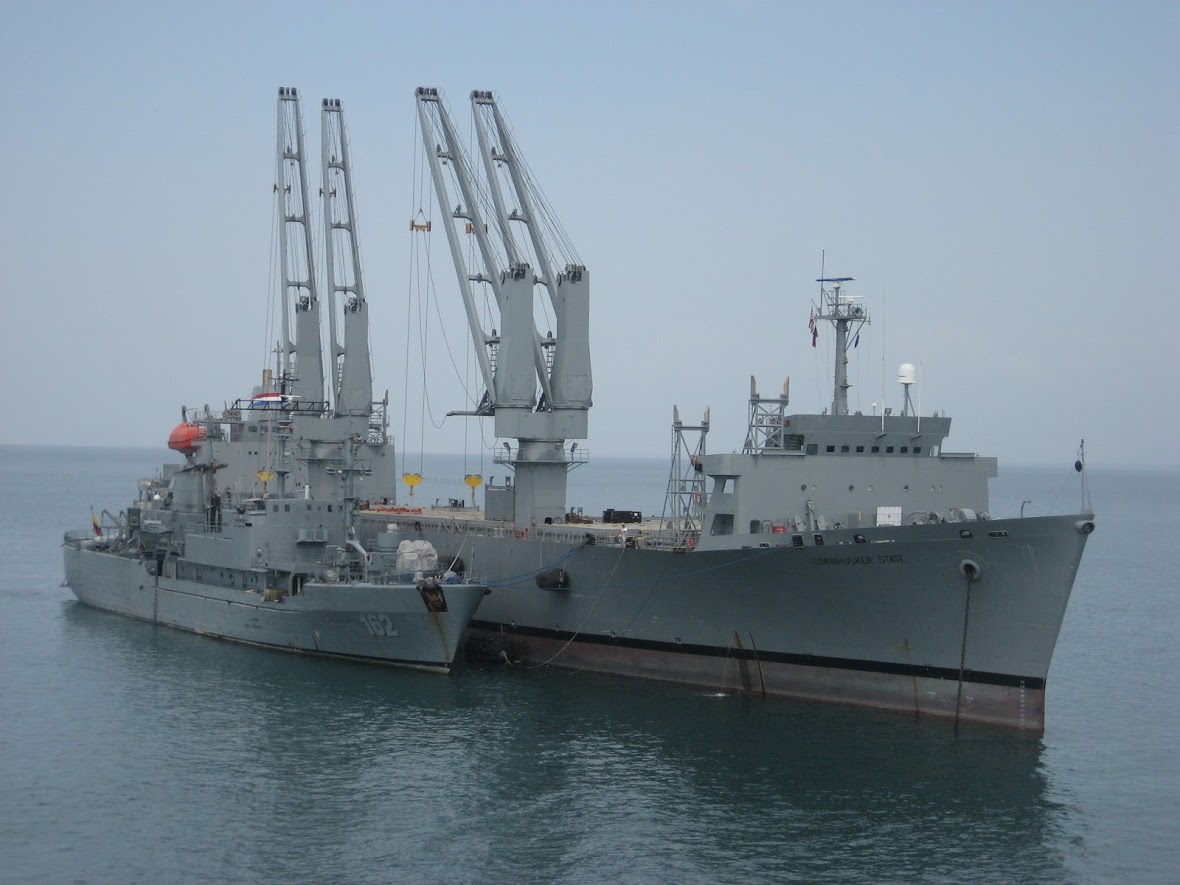
Lawmakers were skeptical the Navy could meet its sealift requirements as part of the National Defense Strategy and that the service was on track to recapitalize its aging sealift fleet.
Rep. John Garamendi, (D-Calif.), called the Navy’s attention to the problem over the years “woefully inadequate” at Wednesday’s joint hearing of the House Armed Services readiness and seapower and projection Forces subcommittees.
The Maritime Administration’s top official, retired Rear Adm. Mark Buzby, said a three-pronged approach to recapitalizing the American-flagged commercial fleet, the Ready Reserve Force and the ships in Military Sealift Command is necessary now to avoid “the bow wave of obsolescence that we know is coming.”
But he kept the door open to looking at other approaches including from think tanks to meet sealift requirements in a new era.
The commitment has to be made “to reverse the decline” in American-flagged shipping and American yards building commercial ships whatever course is chosen. As an example of the decline, Buzby noted that in the 1990s there were seven large shipyards in the United States building commercial vessels. Since then three of the yards have closed; only one remains that builds commercial vessels and the others do repairs and maintenance.
In his remarks, Garamendi suggested one legislative means of addressing those two problems is to require that a percentage of the oil and natural gas produced in the United States be carried in ships built in American yards with American crews. Those ships could be available to the Navy in an emergency and fit the service’s needs for refueling at sea, he added.
“More cargo means … more U.S. flagged ships [and they] employ more American mariners,” Buzby said in his opening statement.
But buying used ships raise national security questions that Buzby said Congress needs to address.
He acknowledged most of his ships are foreign-built and likely the same will hold true as the administration goes shopping for used vessels.
Rep. Rob Wittman, (R-Va.) and ranking member of the seapower panel, said the estimated cost of $551 million to build ships for the sealift fleet was prohibitive at a time when rebuilding capacity quickly was critical. “Time is not in our favor,” noting 85 percent of American forces and necessary equipment are on installations in the homeland that would need to be moved almost entirely by sea to the point of crisis.
Over the past several days in think tank appearances and hearings, Wittman has pressed the Navy on accelerating the buy of used cargo vessels to replace MARAD’s older ships.
Buzby stressed several times a decision needs to be made about how much emphasis is to be placed on having American-built ships in the sealift fleet when it buys used.
“We’re going to be working closely with the Navy and TRANSCOM [Transportation Command]” on this question as the buys of used vessels proceeds and new construction begins.
He added, “we have to find the right mix, the affordable mix.”
Vice Adm. Ricky Williamson, deputy chief of naval operations for fleet readiness and logistics (N-4), said the Navy’s request includes $60 million to buy two used vessels this fiscal year, but that figure does not necessarily include bring those ships, presumably foreign-built up to American maritime and Navy standards.
Looking ahead, he added that $37 million is sought for design work on the National Security Multi-Mission Vessel with construction to begin in 2023; and that could be a waypoint for future shipbuilding decisions affecting MARAD.
As envisioned, the vessel would be used to train future mariners, but could also be employed in humanitarian or disaster relief missions.
Williamson said lessons learned in this design, building and commissioning process could be applied to other joint efforts between the Navy and MARAD. Buzby said he expected to see “great savings” by employing Tote Services as the manager for the fixed price, fixed schedule commercial practice contact on the vessel, but “the proof is in the pudding.”
Several times during the hearing, Williamson said the aging sustainment fleet “has the attention of my entire chain of command.”
Garamendi said, “we have to think differently” about sealift. He referred to a recent Center for Strategic and Budgetary Assessment study on options that could speed up the modernization efforts that the Navy should consider when drawing up shipbuilding plans. “We need to get serious about this” in the current session of Congress.
Buzby said he found options, such as a National Fleet approach, in the CSBA report, “very attractive” on the surface, but the details of what this would mean to the Pentagon and American shippers “need to be teased out,” like square footage needs, reliability and how it would be paid for.
“Cargo is king,” Army Gen. Stephen Lyons said when asked his thoughts on the report’s options. “We’ll [still] need a DoD fleet-owned at the first tranche” if the decision is made to move to a unified approach.





